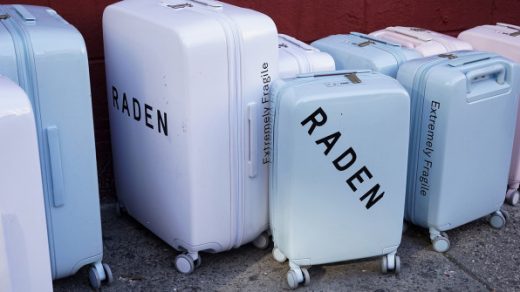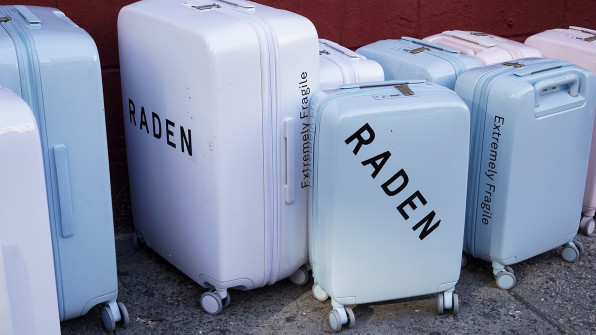For These Startups, A Suitcase Is A Reflection Of Your Soul
Do you remember the time when traveling by train or aircraft was romantic and glamorous? Neither do I.
As long as I’ve been alive, traveling, it seems, has been an uncomfortable experience for the average person. Seats are hard, small, and cramped. The food is usually bland at best. You can barely lift your arms in the joke they call a bathroom. You never know when you might be delayed and forced to wait with other unhappy passengers, with no clue as to when you might get to your destination.
To top it off, there’s the issue of luggage. In airports and train stations across the world, passengers drag around ugly, boring suitcases that are often in varying stages of decline. Wheels and handles fall off. Exteriors are easily scratched and dented. Too many cases look identical, which means you have to watch every single one circulate on the baggage carousel until yours comes along.
A few startups want to help make the suitcase side of travel less painful by making durable, good-looking luggage. “The thing about travel now is that it’s so unglamorous,” says Sara Banks, founder of Steamline Luggage. “Every single thing about it is a slog. A really gorgeous suitcase can add just a smidge of glamour and elegance back into the experience. When you’re stuck in that god-awful security line, it can put a little spring back into your step, the way a really beautiful fashion accessory can.”
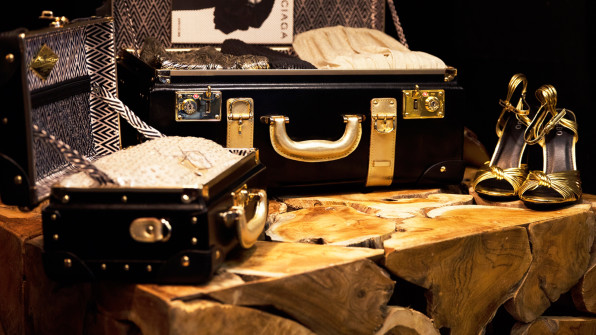
In the early 2000s, when Banks was in her twenties, she owned a textile accessory business and sold scarves and wraps to boutiques in Europe. She would visit fashion trade shows attended by elegantly dressed professionals. “I would see all these women decked out in really nice clothing—beautiful jackets, nice designer handbags—but coming out of the airport carrying around this really ratty luggage,” she recalls. “It lets the whole outfit down.”
Banks decided to reengineer the suitcase. She wanted to create travel bags that were fashion-forward, but also sturdy enough to withstand the rigors of the road (or air or rail). As an avid traveler who spent every free moment backpacking through Indonesia or flying to Paris on a whim, she understood that durability would be key. Trendy novelty suitcases exist; the problem is that most of them are made of cheap materials and, priced at around $100, don’t usually survive more than a few trips.
Banks’s idea was to combine the beauty of vintage leather travel trunks with modern technology. She took a year to design a collection of rectangular leather-wrapped cases with contrasting leather straps and elegant metallic accents, as well as stable feet, TSA locks, silent wheels, and retractable trolley handles. The interior is made of high-density fiberboard and aluminum. “The challenge was to make it as lightweight as possible while still making it durable,” she says.

In 2015, Banks launched Steamline without any external funding. A carry-on bag starts at $430 and, depending on the materials, can go up to more than $1,000. Until now, quality leather trunks were only available from luxury brands like Louis Vuitton and Hermès, which are generally priced at $5,000 to $20,000. Steamline’s mid-range price point is much more accessible for the buyer looking for a well-made bag that will last. (The company backs each case up with a flexible return policy, lifetime warranty, and free repairs.)
It took a while for Steamline to take off. The majority of products were sold online, and at first, the cases were seen as niche objects, designed for eccentric travelers who wanted to re-create the mood of Murder on the Orient Express or Out of Africa. But over the last two years, Banks says that the company finally reached a tipping point and began to grow exponentially. “The sales between this year and last year have already tripled,” she says.
Banks attributes at least part of the growth to increased awareness of the brand. Steamline cases have been featured in travel magazines and blogs, and high-end retailers like The Line and Neiman Marcus started carrying the bags in stores. Steamline also collaborated with Kate Spade and Reiss on special-edition products.
But Banks thinks the uptick in sales also reflects an increased demand for luggage like Steamline’s–products that consumers see as something more than a mere receptacle for their belongings. And as her business was taking off, other suitcase startups entered the market, broadening the discussion about what the ideal modern travel bag might look like. Away and Raden, for instance, both launched in 2015, seeking to create affordable, functional, attractive luggage.

Fashion Doesn’t Mean Ephemeral
Much like Banks, Away’s cofounders Steph Korey and Jen Rubio had observed that people were passionate about travel, but not their luggage. A broken handle or misbehaving wheel could sour an entire trip. “It was interesting seeing a huge industry that had not been given much attention from a fashion- and brand-experience perspective,” says Korey. “It was just an afterthought. We wanted to take on this utilitarian object and turn it into a fashion item.”
For Korey and Rubio, this didn’t mean creating a suitcase that was sensitive to trends, but rather one with a sleek, timeless aesthetic. They say they had 800 in-depth conversations with travelers about what they needed in a suitcase before landing on the final design: A monochromatic hardshell case that’s available in muted colors (gray, dark blue, cream) and is light, maximizes the interior capacity, and scratch-resistant. Carry-on bags, which go for $225, have in-built phone chargers. “Trendy isn’t one of the things we were going for,” says Korey. “Our real goal was to keep things out of a landfill and make one really amazing suitcase that someone could take on their travels for their entire life.”
The cofounders stole a page from the fashion-industry playbook when it came to building a brand personality. Away’s Instagram feed is full of aspirational images of young people traveling to chic urban settings, like airy New York lofts, bus stops in Japan, and brick roads in London. These photos are meant to conjure up the excitement of modern travel—as much as Steamline was tapping into the romance of the past—and build a connection with the consumer. Few stalwart luggage brands, such as Samsonite, Delsey, Tumi, or American Tourister, have managed to forge this connection with a millennial audience.
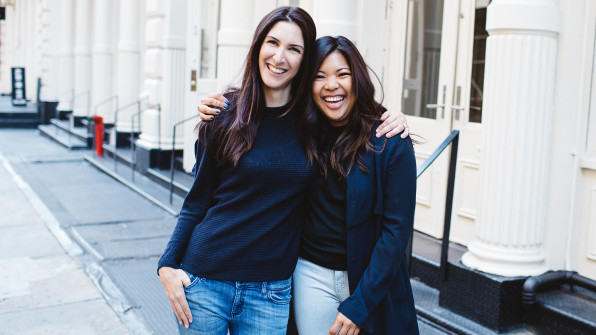
Away also reimagines the experience of purchasing luggage. For many of us, buying a suitcase means going to a department store and making a selection from a wall of functional, if dull, choices. And for many of us, that’s just fine—not everyone wants a bag that communicates one’s unique identity to the world. But for others who do want to make a statement and hate boring bags, Away’s founders have something else in mind.
Having worked at Warby Parker and Casper, Korey and Rubio began with the assumption that today’s consumers would be willing to buy almost anything online. So there was no need for traditional brick-and-mortar stores. Away ships bags for free, and there’s a 100-day trial period during which customers can return a used case if it doesn’t suit their needs.
Away also holds pop-up shops around the world to give people a chance to see the luggage and experience the brand. Bags on display are accented by complementary products from brands with a similar aesthetic: a S’well water bottle in gray, chic travel magazines like Afar, Polaroid cameras, and Aesop toiletries. “All these brands have audiences of their own, whom they will introduce to Away,” Rubio says.
Each pop-up incorporates a theme of an individual city and is stocked with local products. The shops also often host yoga classes, concerts, or dumpling-making tutorials. Away want people to leave the shop with a clear understanding of their ethos, which is making the most out of every travel experience.
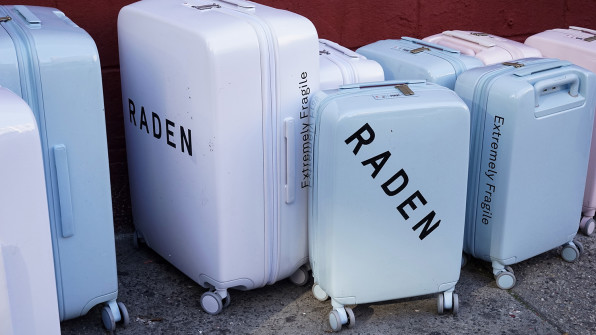
The Suitcase As Performance Art
Josh Udashkin founded Raden on the belief that consumers are beginning to treat their suitcases like they do other key accessories: as an extension of their personality. He was inspired by the headphone industry (particularly Beats and Frends), which took a utilitarian product, introduced cool design and lifestyle branding, and launched a veritable craze. “Until now, you wouldn’t think of luggage as a reflection of the rest of your taste,” he says. “There was no delightful, smiling moment when you made your purchase. It was time for young people to take a look at luggage—the way they already have in many other large, arcane industries, like mattresses and razors—and reimagine it for the way we shop today.”
But the problem, Udashkin says, is that consumers have been trained to think of suitcases as boring—if they think of them at all. He was actually a bit embarrassed to tell his family and friends he was launching Raden. “It was easier for me to come out of the closet than it was for me to tell people that I was going to sell luggage,” he says.
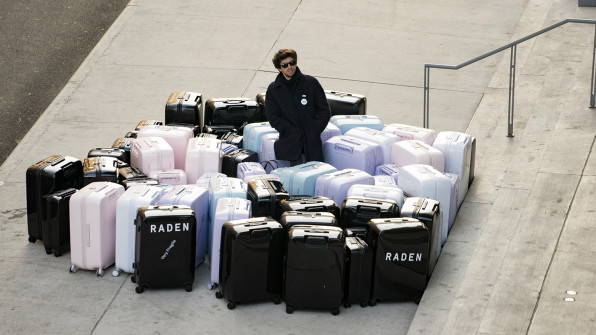
His strategy has been to take drastic, attention-grabbing measures that reposition the suitcase as a work of art. Raden pieces are sleek and minimalist; they come in many colors, ranging from black to blush, and stack neatly. Each one is equipped with a phone charger and GPS so you can keep track of your bag at the airport using a Raden app.
Udashkin launched the company in a 6,000-square-foot space in New York’s Soho, with a “massive coliseum” of floating white luggage. People popped into the store thinking it was an art gallery and took selfies with the bags. “For us, it was a little bit of fun, a little bit of a smile,” he says.
More stunts followed. Last December, Raden hired performance artist Matt Starr, who stacked up 84 suitcases in various colors outside five different New York hotels, including The Standard and The Plaza. In a sort of absurdist experiment, Starr tried to check into each hotel with all the bags in tow. At Selfridges on Oxford Street in London, the company created a display of suitcases that also served as a phone-charge bar. “I don’t think I’m going to convince someone to buy a suitcase when they see it in a pop-up shop,” he says. “So we’ve taken a totally different approach: It’s more about spectacle and experience, and not so much about the bag itself.”
As the Belgian surrealist artist René Magritte might have said: This is not a suitcase.


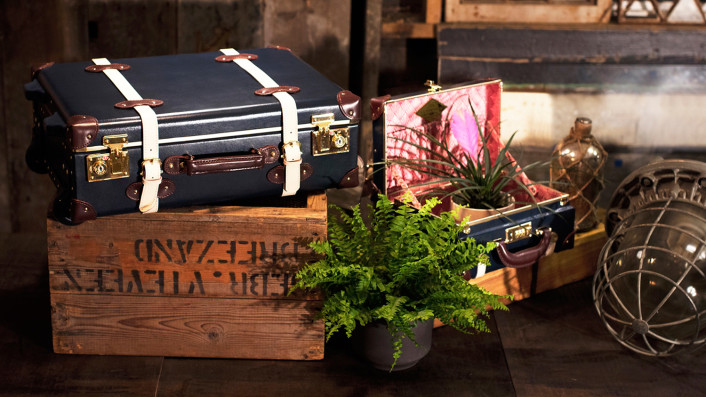
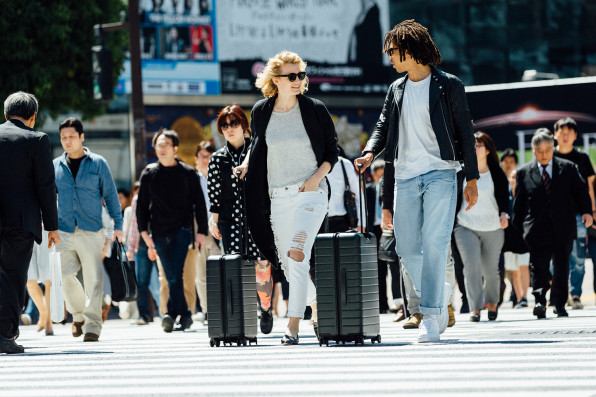
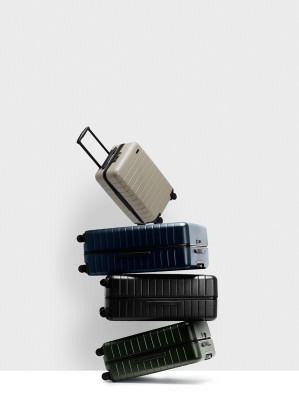
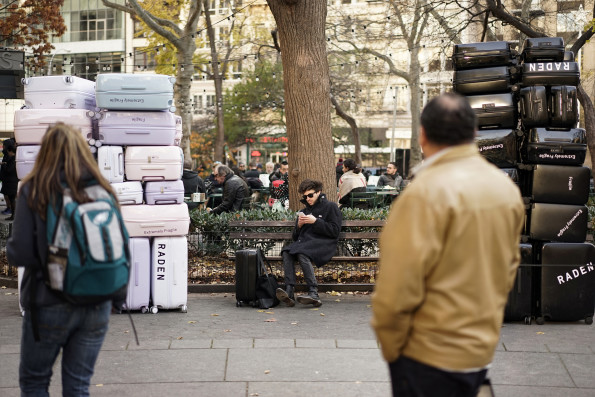
Fast Company , Read Full Story
(48)

